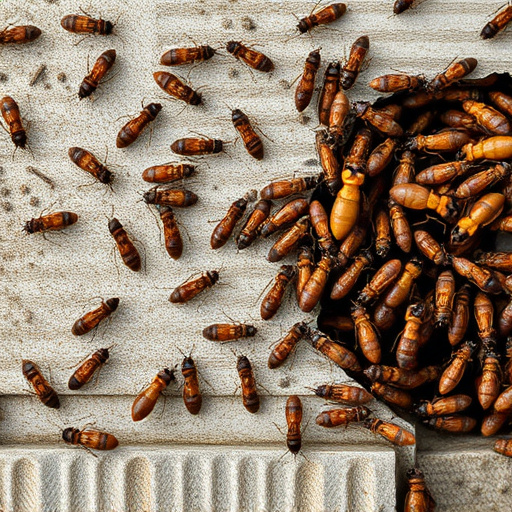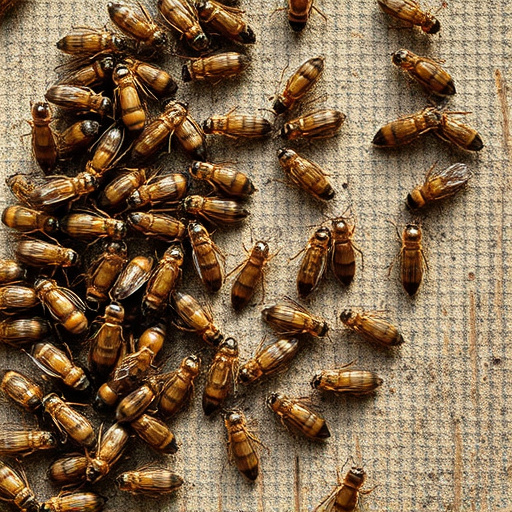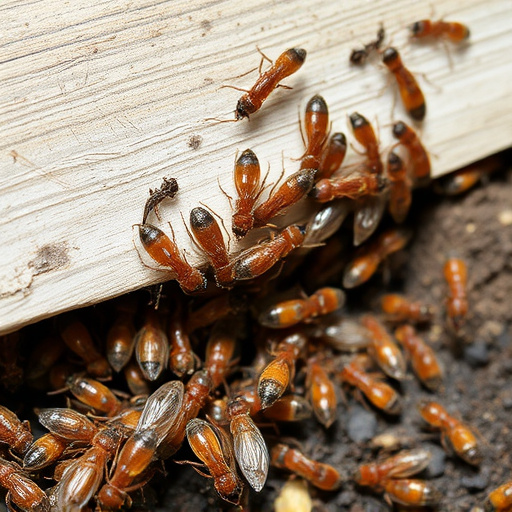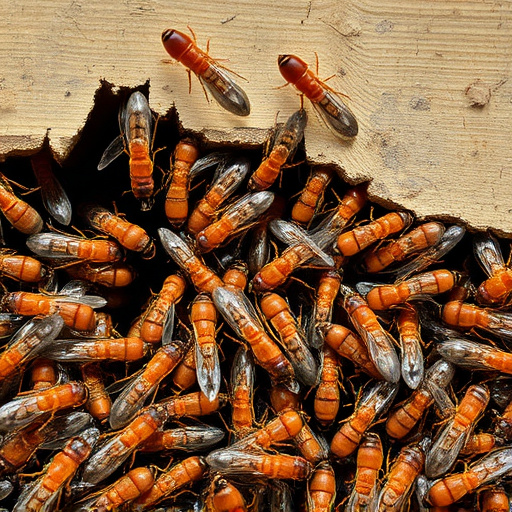In Vail, Arizona, understanding the impact of termites is crucial for safeguarding homes from structural damage. The warm, humid climate creates ideal conditions for these wood-eating pests attracted to cellulose materials in local construction. Regular inspections are vital for early detection. Termite control methods include chemical barriers, bait systems, organic solutions (like natural predators and plant-based repellents), heat treatment, and traps. Heat treatment is an eco-friendly option targeting only termites without harming beneficial insects or wildlife. Preventive measures like property maintenance, no wood-to-soil contact, and regular inspections are cost-effective ways to avoid extensive damage repairs.
Looking to protect your Vail, AZ home from termite damage? This comprehensive guide explores various termite treatment options tailored to the local landscape. From understanding the extent of termite damage in Vail to exploring chemical treatments, non-chemical alternatives, heat treatment, baits and traps, and preventive measures, we equip you with the knowledge to make an informed decision for effective termite control in Vail, AZ.
- Understanding Termite Damage in Vail, AZ: A Local Perspective
- Chemical Treatments: Traditional Solutions for Effective Termite Control
- Non-Chemical Options: Natural and Eco-Friendly Ways to Combat Termites
- Heat Treatment: A Modern Approach to Termite Eradication
- Baits and Traps: Luring and Eliminating Termites from Your Property
- Preventive Measures: Long-Term Strategies for Protecting Your Vail Home
Understanding Termite Damage in Vail, AZ: A Local Perspective

In Vail, AZ, understanding termite damage is crucial for effective termite control. Termites are prevalent in this region, causing significant structural harm to homes and buildings if left untreated. The local climate, with its warm temperatures and year-round humidity, creates an ideal environment for termite activity. Wood structures, common in many Vail homes, attract these pests that feed on cellulose materials. Over time, undetected termite infestations can lead to substantial property damage, making early detection through regular inspections vital.
Termite control in Vail AZ involves specialized treatments tailored to the local ecosystem and pest behavior. Professional exterminators employ various methods, including chemical barriers, bait systems, and organic solutions. Chemical treatments create a protective barrier around the property, while baiting systems attract termites with attractive baits, eventually eliminating them. Organic options, such as biopesticides derived from natural substances, offer environmentally friendly alternatives. Local regulations and environmental considerations play a significant role in choosing the most effective and sustainable termite control methods for Vail residents.
Chemical Treatments: Traditional Solutions for Effective Termite Control

Chemical treatments have long been the go-to solution for termite control in Vail, AZ. These traditional methods involve applying powerful insecticides to target and eliminate termite colonies. Termite control experts use a variety of chemicals, including termiticides and insect growth regulators (IGRs), which disrupt the termites’ ability to feed, grow, and reproduce.
When it comes to effective termite control in Vail, AZ, chemical treatments offer a fast and efficient solution. Professional applicators carefully assess the extent of the infestation and apply the appropriate chemical formulae to affected areas, ensuring a robust barrier against termites. Regular inspections and maintenance are crucial to monitor the effectiveness of these treatments and provide ongoing protection for homes and properties.
Non-Chemical Options: Natural and Eco-Friendly Ways to Combat Termites
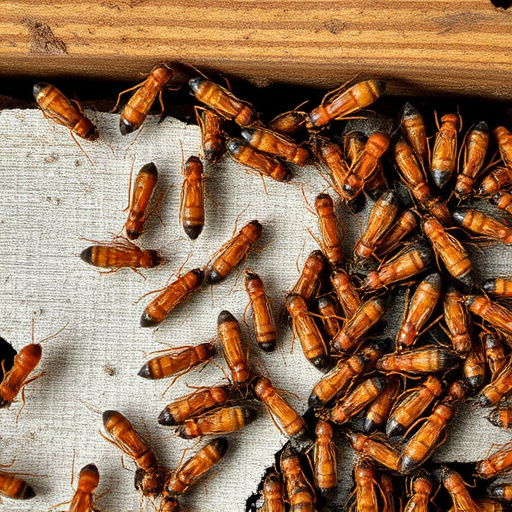
In the quest for effective termite control in Vail, Arizona, it’s essential to explore non-chemical options that offer natural and eco-friendly solutions. Beyond traditional chemical treatments, homeowners now have a range of alternatives that target termites while minimizing potential environmental impact. These methods leverage natural predators, beneficial insects, and organic compounds to create a balanced approach to pest management.
One promising strategy involves the introduction of natural termite predators like certain species of ants and fungi. These biological controls can effectively disrupt termite colonies without resorting to harmful chemicals. Additionally, using plant-based repellents and essential oils has gained popularity due to its safety for both humans and pets. As Vail’s termiticide regulations evolve, embracing these eco-conscious methods aligns with responsible property care while ensuring a termite-free environment.
Heat Treatment: A Modern Approach to Termite Eradication

In recent years, heat treatment has emerged as a modern and effective approach to termite eradication in Vail, AZ. This innovative method utilizes precise heating techniques to eliminate termites and their colonies from infested areas. By raising the temperature to specific levels, this process effectively disrupts the pests’ metabolism, rendering them incapable of survival. Unlike traditional chemical treatments that may have lingering environmental impacts, heat treatment is considered a more eco-friendly option, as it targets only the intended pests without harming beneficial insects or other wildlife.
The process involves strategically placing heating devices in infested structures, ensuring thorough coverage. This method is particularly advantageous for treating hard-to-reach areas and complex architectural designs common in Vail’s residential and commercial properties. Moreover, heat treatment has shown promising results in preventing termite reinfestation, making it a preferred choice for long-term termite control in Vail, AZ.
Baits and Traps: Luring and Eliminating Termites from Your Property

In the pursuit of effective termite control in Vail, Arizona, baits and traps emerge as a strategic approach to lure and eliminate these relentless pests from your property. This method involves deploying attractive substances, often accompanied by strategically placed traps, to entice termites and lead them away from your home or building. Termite baits are designed with a dual purpose: first, to draw termites with their preferred food sources, and second, to deliver a controlled, targeted treatment that exposes the entire colony to terminators.
Once lured, termites become trapped, either in stationary devices or within enclosed spaces, where they come into contact with the active ingredients in the bait, effectively neutralizing the colony. This method is particularly advantageous for its non-invasive nature and minimal impact on the surrounding environment, making it a preferred choice among homeowners seeking long-lasting termite control solutions in Vail, AZ.
Preventive Measures: Long-Term Strategies for Protecting Your Vail Home

In the long run, preventing termite infestations is a more cost-effective and environmentally friendly approach than dealing with damage after the fact. Termite control in Vail AZ involves implementing robust preventive measures that act as a robust shield for your home. One of the primary strategies is to maintain excellent property maintenance, ensuring there’s no wood-to-soil contact and removing potential food sources like dead trees or lumber. Regular inspections by professionals can identify vulnerabilities early on.
Additionally, using termite-resistant building materials and constructing barriers around the foundation can significantly deter these pests. Sealants and physical traps are other effective preventive tools. Property owners in Vail should stay vigilant, as consistent monitoring and swift action when signs of termites are detected can save thousands in damage repairs.
When it comes to termite control in Vail, AZ, understanding your options is key. From traditional chemical treatments to modern heat therapies and eco-friendly non-chemical solutions, each method offers a unique approach to addressing termite damage. By combining these strategies with preventive measures, homeowners can effectively protect their properties from these relentless pests. Choosing the right termite control method ensures not only the safety of your home but also contributes to a healthier, more sustainable environment in Vail and beyond.
